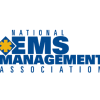Compared to patients in cardiac arrest who have a shockable heart rhythm, patients with nonshockable rhythms such as asystole and pulseless electrical activity have even worse chances of survival. But new research shows that even for those with nonshockable rhythms, delivering continuous, high-quality chest compressions saves more lives than CPR in which there are more pauses to check rhythms on an AED and ventilate.
Researchers from the University of Washington in Seattle reviewed data from nearly 4,000 patients who had an out-of-hospital cardiac arrest and were treated by King County EMS between 2000 and 2010. Patients were divided into two groups: those treated before 2005 and those treated after 2005, the year the American Heart Association updated its CPR guidelines to emphasize the importance of minimizing interruptions in compressions. Specific changes included:
- Reducing the initial number of back-to-back rhythm analyses and shocks
- Eliminating rhythm and pulse checks immediately after each shock
- Increasing the ratio of chest compressions to ventilations from 15:2 to 30:2
Overall, few survived cardiac arrest with a nonshockable rhythm. Nonetheless, survival was markedly better after the new guidelines were adopted in 2005: Survival to hospital discharge rose from 4.6 percent to 6.8 percent, and more patients had a favorable neurological outcome. Return of spontaneous circulation also went up from less than 27 percent to about 34 percent. And more patients were alive at one year—4.9 percent, up from 2.7 percent.
“Although previously shown to principally benefit patients with shockable arrhythmias, the changes in the approach to resuscitation implemented during the intervention period are conceivably even more critical for patients with nonshockable out-of-hospital arrest, for whom defibrillation confers no known benefit,” researchers concluded in the study, published online April 2 in Circulation. According to researchers, the proportion of nonshockable out-of-hospital arrests is growing—about two-thirds of arrests during the study period were nonshockable. The good news is that more bystanders delivered CPR from 2005 to 2010 than during the previous five years (58 percent compared to 48 percent).
Paramedics Spot-on About Strokes Yet Still Miss Many
Paramedics are usually right when it comes to spotting strokes, yet they still miss many, according to a study presented in April at the American Academy of Neurology meeting in New Orleans.
Researchers examined the records of 5,300 patients transported by EMS to the Loyola University Medical Center’s emergency department. Paramedics were able to identify stroke patients with a 99.3 percent specificity. (Specificity indicates there’s a high probability the patient actually has the condition.) However, the paramedics’ sensitivity rate was only 51 percent—that means that while they were overwhelmingly correct in their diagnosis when they suspected a stroke, they also missed about half of all strokes. (Put another way, of 96 actual strokes, medics correctly identified 49 but missed 47.) Medics were more likely to miss strokes in patients younger than 45, according to the study.
“If a paramedic thinks a patient is having a stroke, that should be a reliable indicator that the hospital’s stroke team should be activated,” study co-author Michael Schneck, M.D., a professor in the departments of neurology and neurological surgery, said in a news release. Loyola’s EMS system includes a mix of 54 municipal agencies and private ambulance companies.
Dispatchers Suffer from PTSD Symptoms
Emotional distress caused by traumatic 911 calls may lead to symptoms of post-traumatic stress disorder (PTSD) in some dispatchers. Researchers surveyed 171 emergency dispatchers from 24 U.S. states; most were white and female, with an average age of 38 and more than 11 years on the job.
Dispatchers were asked about the types of calls they handle, the level of distress associated with each and the worst call they had dealt with during their career. The worst calls were the unexpected injury or death of a child (16 percent), followed by suicidal callers (13 percent), shootings involving officers (10 percent) and calls involving the unexpected death of an adult (10 percent).
About 32 percent of dispatchers reported feeling high levels of distress after traumatic calls. About 3.5 percent reported symptoms severe enough to be considered PTSD, according to the study, which appeared in the April issue of the Journal of Traumatic Stress. “Post-Traumatic psychological disorders are usually associated with front line emergency workers, such as police officers, fire fighters or combat veterans,” study author Michelle Lilly of Northern Illinois University said in a news release. “Usually research considers links between disorders and how much emotional distress is experienced on the scene of a traumatic event. However, this is the first study on emergency dispatchers, who experience the trauma indirectly.”
Google Flu Trends Website Spots Spikes in Flu Activity
A rise in Google searches for flu information correlated with an increase in people seeking care for flu-like symptoms at a large urban hospital emergency room. Researchers tracked data captured by Google Flu Trends for Baltimore and compared it to data on adults and children seeking care at the Johns Hopkins Hospital emergency department for flu-like symptoms over a 21-month period in 2009 and 2010. Google Flu Trends uses data on search terms to estimate flu activity.
Currently, emergency departments, hospitals and other health care providers rely on Centers for Disease Control and Prevention flu case reports, which are provided from October to May, to track and prepare for an expected surge in cases. According to researchers, Google’s Flu Trends may be a more up-to-date early warning system. The study is in the Jan. 9 issue of Clinical Infectious Diseases.


